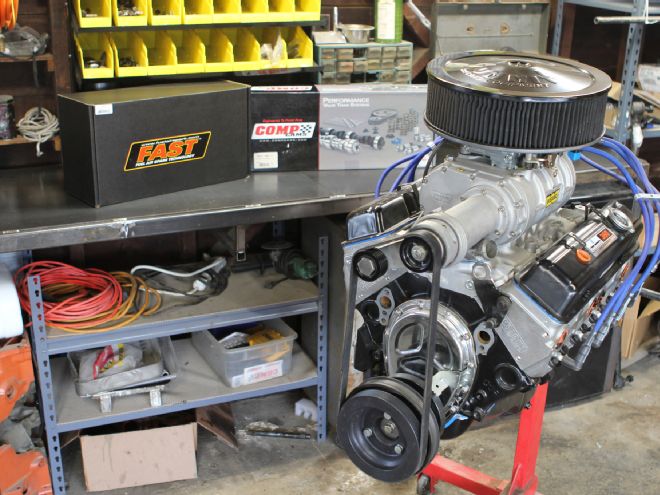
Most in or near the hot rodding/drag racing world have heard the expression “turn the wick up.” Usually, that phrase is a reference to increasing performance or leaning on an engine harder for a better pass. What isn’t so commonly mentioned is what’s at the end of that metaphorical wick—it’s a bomb.
Going into our third session of dyno testing on project Blown Budget, a Chevrolet Performance 190-horsepower crate engine sent to us courtesy of Summit Racing, we thought for sure the roots-blown small-block would be decorating the dyno cell floor at Westech Performance. At this point, the all-cast bottom end of the engine was approaching the point of 100 dyno pulls and was consistently cranking out power in the 450-horsepower range. But, to both our surprise and relief, the little-engine-that-could held its own quite honorably in yet another series of dyno floggings and cracked 500 lb-ft of torque in the process.
When we last left you, the engine had received a Weiand 142 Pro Street supercharger, a Comp Cams flat tappet blower camshaft, and a fresh set of Brodix IK200 heads. The dyno reported 451 horsepower and 455 lb-ft of torque, with 7.5 psi of boost from the little blower. With a one-step smaller pulley left in our arsenal, a desire to test throttle body fuel injection on a roots-type supercharged engine, and the knowledge that there was power left hiding in our flat tappet valvetrain, we returned to Westech to give the engine one more thrash session.
The goal of this build series has always been to add performance to the engine in affordable steps, just like any hard-working guy might do at home. So, we figured a roller cam would be a great way to do just that. But, here’s the twist, we decided to keep the new Comp cam’s duration as close to the outgoing flat tappet as possible. Why you ask? While we could have gone significantly larger on the specs, we chose to keep the duration and LSA figures similar to gauge how well the increased lift (0.462-inch to 0.570-inch) and aggressive lobe ramp rate of a roller cam would translate into power and torque gains. Also, the engine idled well, sounded great, and pulled excellent manifold vacuum—all factors that would make it perfect in a street car. A few more horsepower on the engine dyno wasn’t worth sacrificing those characteristics.
Camshaft Type Duration @ 0.050” Lift at Valve Flat Tappet (PN 12-556-4) 218 Intake / 230 Exhaust 0.462 Intake / 0.480 Exhaust Hydraulic Roller (PN 12-466-8) 218 Intake / 224 Exhaust 0.570 Intake / 0.565 Exhaust
Eager to see the results, we installed the new cam and headed down to Westech Performance to verify power gains. Shortly after arrival, we strapped the engine to the dyno and made a pull with the new cam. There was an immediate and audible change in the exhaust tone as it raced toward redline. Westech’s Steve Brulé eased back on the throttle and the computer reported 464.7 horsepower and 463 lb-ft of torque, a net gain of 16.7 horsepower and 7.7 lb-ft.
While that may sound like an insignificant amount for the added cost of a roller cam, keep in mind that this cam actually had 6 degrees less exhaust duration than the flat tappet cam it was replacing. It also substantially improved the powerband of the engine. Power and torque weren’t just up at the peaks; they were up everywhere! All across the rev range, the engine made more average torque and power. There were no tradeoffs of low-end for high-end; improvements were everywhere. This is the type of improvement that you will not only feel in the seat of your pants, but will make any car an all-around better performer. See the dyno graph at the end of the article to get a visual of just what moving to a roller cam did to the power and torque curves.
Next, it was time to make a jump from our trusty Holley blower carb to see how a FAST XFI Sportsman fuel-injection system performed on our blown engine. We’ve experimented with throttle body injection systems many times over the years and they have all performed flawlessly. That being said, we had never used one in a roots-type supercharged application before and were interested to see how it would perform in that environment.
We opened the box, installed the software on Westech’s dyno computer and set to work fastening the hardware onto the engine. We installed the coolant temperature sensor into the block and bolted the throttle body in place of the carburetor. FAST does offer a port-injected system, but because the supercharger rotors are cooled by fuel, that system is incompatible with any roots-type blower.
The wiring, easily the most intimidating aspect to most DIYers, was a simple plug-and-play affair with all wires clearly labeled. We terminated each wire to where the tag specified (12v ignition source, positive battery, negative battery, rpm signal, etc.) and snapped all of the connectors into place. We plugged the rpm signal wire into the tach output on our Performance Distributors HEI unit. This worked perfect for us, but after talking to David Page at FAST, we learned that on other HEI distributors this connector runs straight to the coil negative and can cause a noisy signal and inhibit performance. He recommends an ignition box tach output as a better solution.
One thing worth mentioning is that instructions for the system are on the included flash drive (not printed out). The system offers extremely in-depth setup instructions, you’ll just have to install the software first and open the help section in the tuning software to find them.
Prepping for a Roots-Type Supercharger
If you are utilizing the XFI Sportsman kit in a roots application, like we are, you will need to make a few simple changes to make the system perform optimally. First, the internal MAP sensor on the unit will need to unplugged and connected to a 2-bar MAP sensor (PN 307008) plumbed to below the supercharger (though we’re told a 2-bar sensor will eventually be offered on boost-ready kits). A 2-bar sensor is capable of measuring boost up to 14.7 psi, while a 1-bar is only designed to read up to 0 manifold vacuum for naturally aspirated applications. Secondly, the intake air temperature (IAT) sensor will need to be unscrewed from the throttle body and installed in the intake manifold below the blower. Because a side effect of compressing air is heat, air above and air below the blower are radically different temperatures. By placing the IAT below the blower, the computer is getting the most accurate information as to the temperature of air being fed to the cylinders and can make the correct fueling corrections.
Tuning, Boost, and Unexpected Horsepower
With everything installed, we handed the keyboard off to Westech’s insanely talented Eric Rhee for tuning duties. Eric ran through the systems options and tables, selected a base map similar to our engine from the systems library and the engine fired up on the first crank. The system has an advanced self-learning mode but since the load the engine experiences on the dyno is different than what it will see in a car, Eric and Steve just tuned the engine the old-fashioned way by making short “sweep” pulls on the dyno and adjusting the fuel tables as necessary.
After a short while, they had the fueling dialed-in enough for a full pull. Steve cranked up the dyno’s water brake once more and the system rewarded us with 479.5 horsepower and 472.8 lb-ft of torque, a gain of 14.8 horsepower and 9.8 lb-ft from the addition of the FAST XFI Sportsman system. We have to admit we were a little surprised to see the engine pick up power from an EFI swap, as carburetors usually generate more peak power on the dyno. After a little brainstorming we figured out where the additional power came from. Our carb was sized at 750 cfm, a fitting size for a 350ci street engine. The FAST throttle body flows a whopping 1,000 cfm and the blower was thankful for the extra airflow.
We have no doubt that a larger carburetor would have yielded more power, but on the street, anything larger than a 750 on such a small engine would not be ideal for driveability. The fuel-injection system can get away with substantially more cfm than a carburetor because it does not rely on a strong booster signal to generate throttle response and proper fuel metering. Only the amount of fuel programmed into the system will be injected no matter how large the throttle body is.
Upping the Ante
There are a select few hot rodders in the world that can leave well enough alone—we are not among them. So, we pulled one last trick out of our bag of horsepower and installed a 2.5-inch top pulley on the Weiand blower. Paired with a 7-inch crank pulley, that gave us a 2.8:1 pulley ratio (the blower will spin 2.8 times as fast as the engine). We whacked Blown Budget against the dyno one last time and finished the day out at an extremely healthy 500.7 lb-ft of torque at 4,300 rpm and 490 horsepower at 5,900 rpm; 500 lb-ft aint messing around folks. The extra blower rpm from the smaller pulley, though a very aggressive overdrive ratio, generated 9.8 psi of torque bolstering boost!
When we first started messing with this cheapo crate engine, we never expected it would crack the 500 lb-ft mark. Not only has it done that, it’s proven durable far beyond any and all expectations. While we would never recommend this as a dedicated competition engine, for the guy looking for a fun mill to cruise the streets, make an occasional dragstrip pass, or just get his Bow Tie back on the road, we’d have to say the Chevrolet Performance 190-horse crate is one heckuva a budget buy.
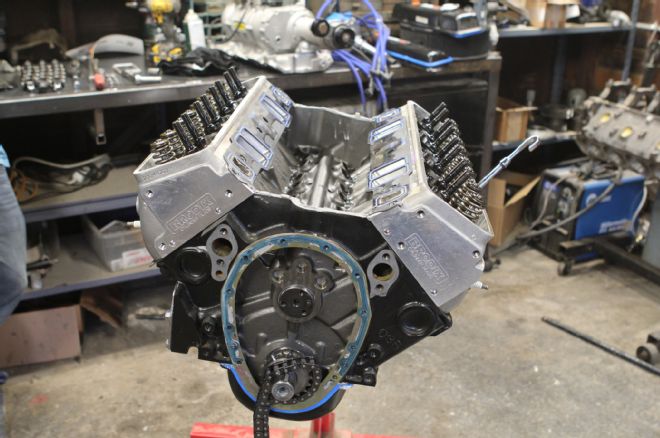
1. We stripped our engine of the intake, blower, and the valvetrain in the Brodix IK200 heads to install the roller cam.
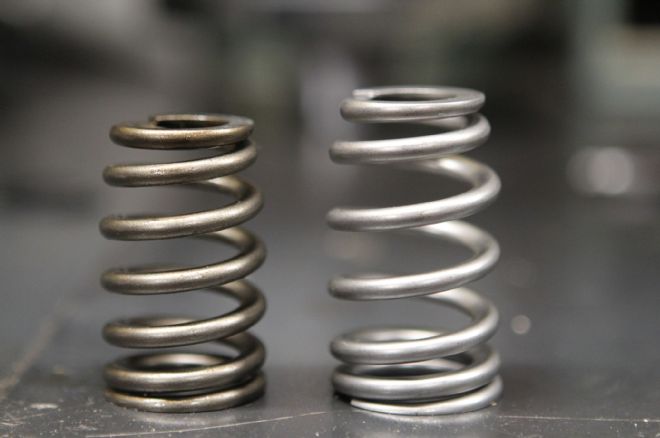
2. A roller cam needs significantly stiffer springs than a flat tappet. Notice how much taller the roller cam spring on the right is than the one it is replacing (left). This meant removing some of the valvespring shims to achieve the desired 1.800-inch installed height.
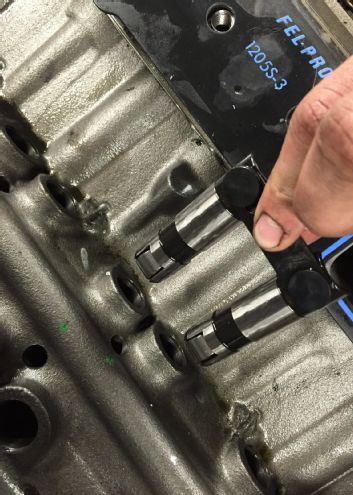
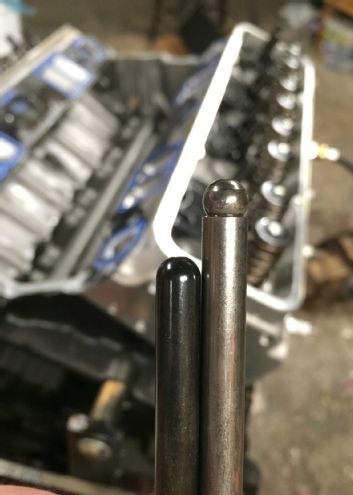
3. Roller lifters are taller than flat tappet lifters, which necessitates replacing the pushrods with shorter units. Comp includes the correct length pushrods in their K-kits.
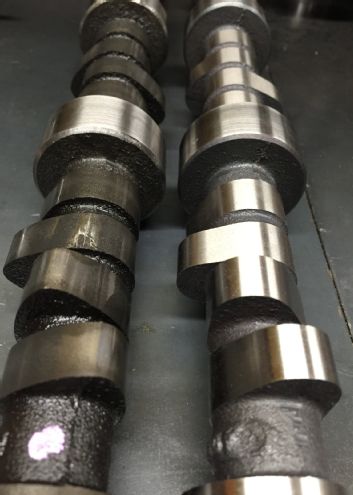
4. Take a look at the difference in lobe shape between roller and flat tappet cams. It’s easy to see how much more aggressively the roller opens the valve simply by looking at the lobes.
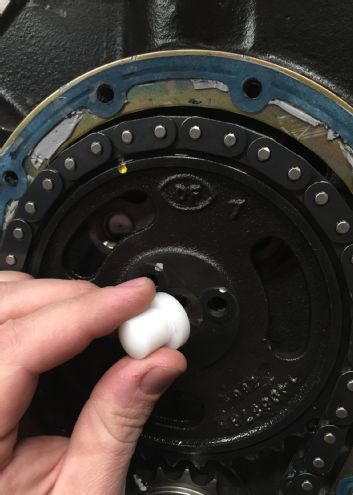
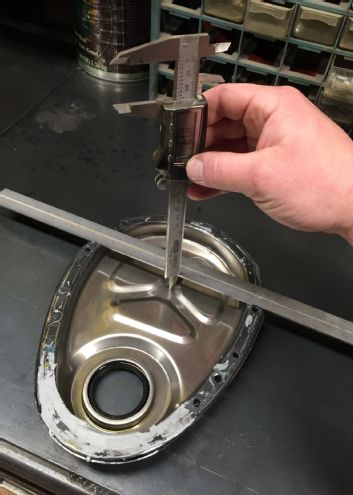
5. Unlike a flat tappet cam, roller cams need to be positively located in the cam bore. We used a nylon thrust button from Comp. Make sure to measure the depth of the front cover to ensure there is 0.005-0.010-inch of endplay in the cam. Excessive endplay will cause the cam to walk, which will retard ignition timing.
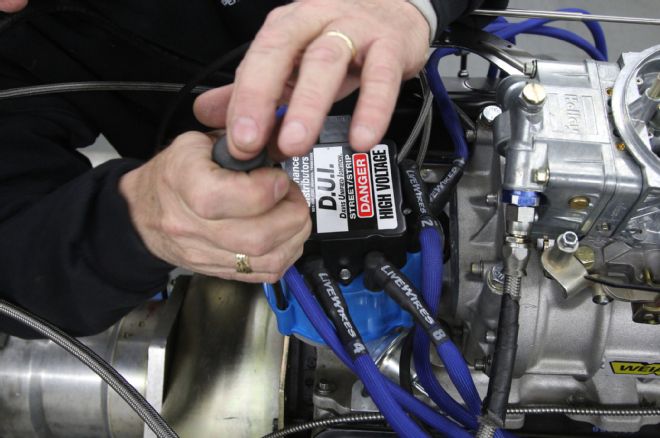
6. Switching to a roller cam also requires a melonized iron gear, so we needed to make sure our old distributor was compatible. However, upon dissecting our used stock HEI distributor, we found excessive endplay in the shaft. We took the opportunity to upgrade to a Street/Strip HEI unit from our friends at Performance Distributors.
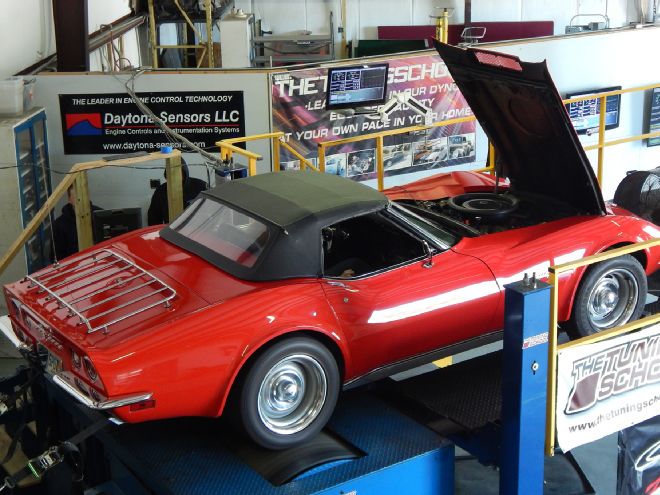
7. Since we were adding considerable lift, we measured our piston-to-valve clearance, just to be safe, and found we had about a mile!
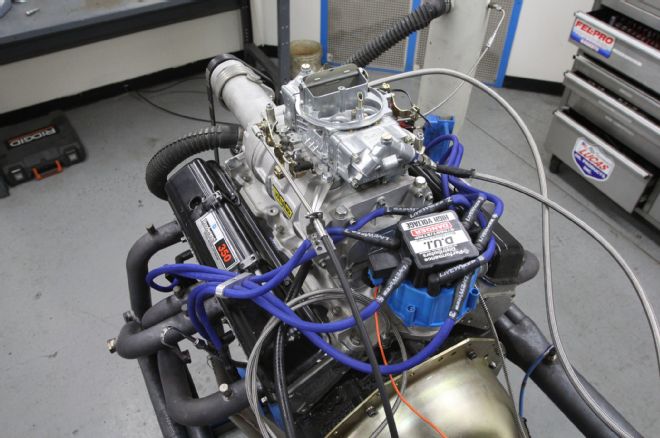
8. With the engine snugged up to the dyno. It was time to make our first pull and substantiate what a roller cam of the same duration is worth. The answer was an impressively bolstered midrange and 16.7 peak horsepower.
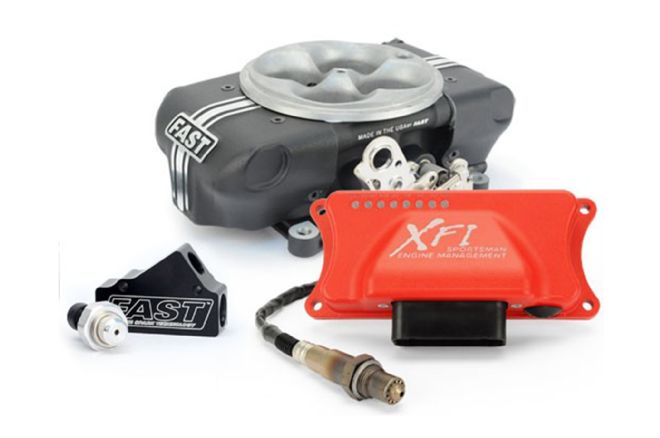
9. We were really curious to see how a throttle body injection system would take to a roots-type supercharged application. FAST’s XFI Sportsman is boost compatible, can support 1,200 horsepower, and is both user-tunable and self-learning.
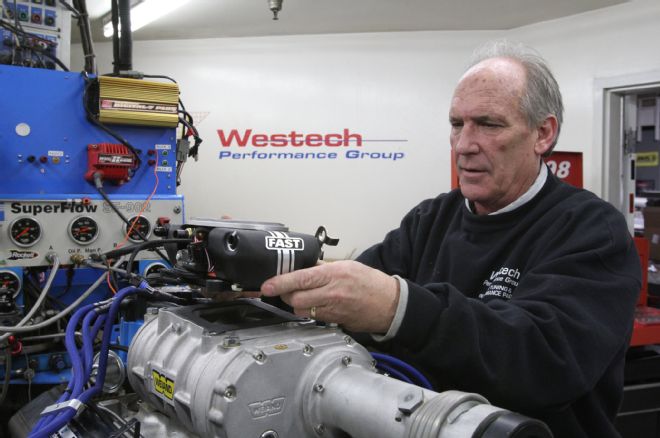
10. Steve removed the blower carb and installed the FAST throttle body, which has a 4150-style flange.
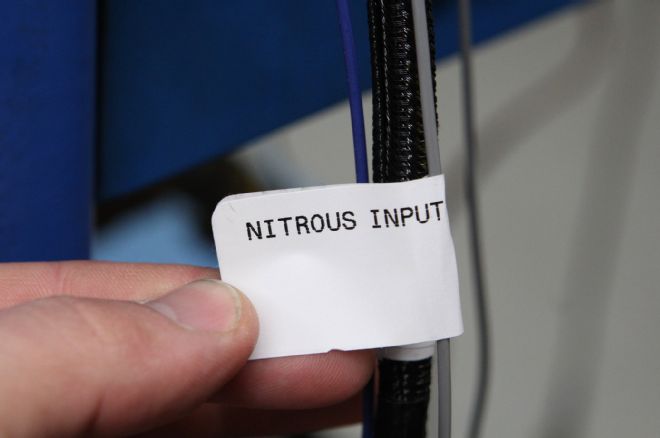
11. The wiring harness for the FAST system is clearly labeled and easy to install. Instructions can be found on the included USB drive.
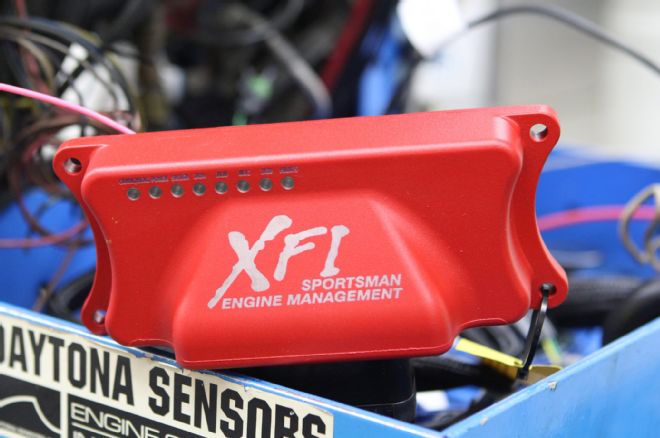
12. The XFI Sportsman computer is user-tunable and self-learning. It has the ability to run ignition timing but for this test we only tasked it with providing fuel.
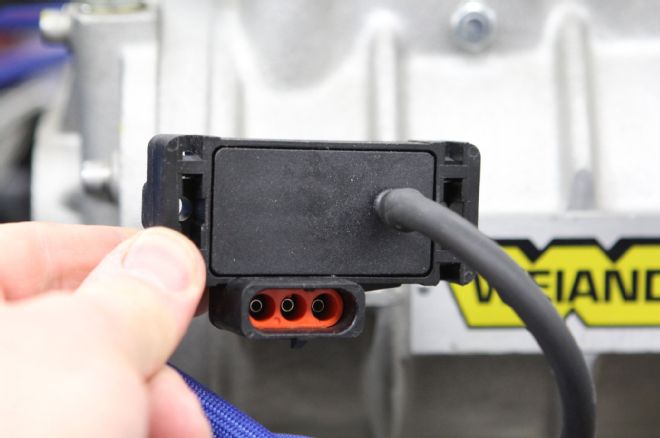
13. An external 2-bar MAP sensor is required on a boosted application. This meant removing the front injector cover on the FAST throttle body, unplugging the connector for the 1-bar MAP sensor, and connecting it to this one. (Note: The external MAP sensor needs to be plumbed to the manifold underneath the blower.)
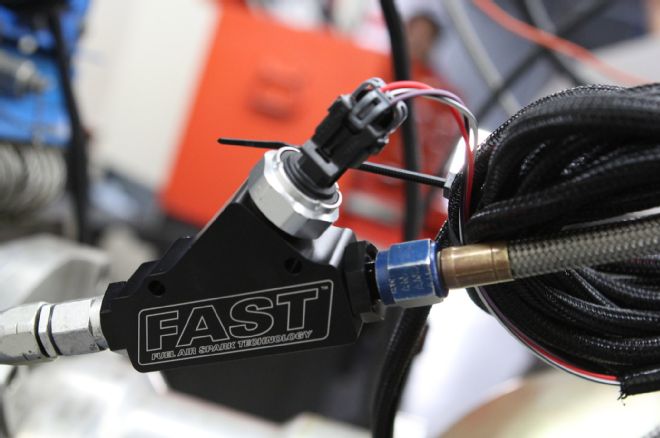
14. This FAST Y-block incorporates a fuel pressure sensor and easily slips in-line via two -6AN fittings before the throttle body unit.
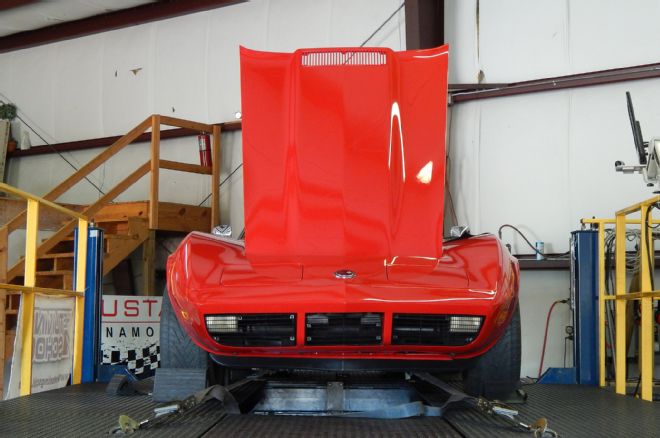
15. Westech’s Eric Rhee expertly worked the keyboard tuning our FAST system for duty on a blower engine.
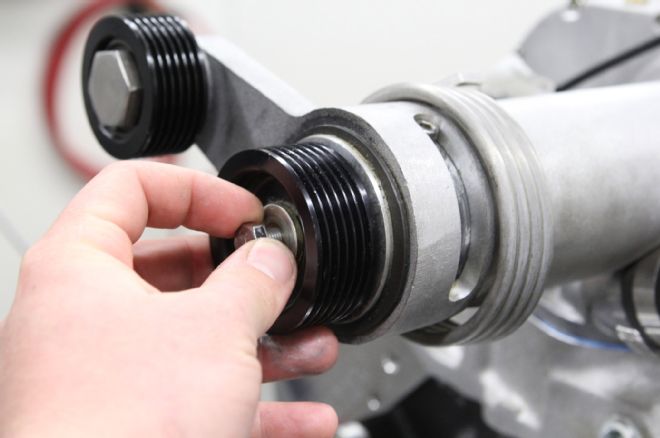
16. Our last test of the day was to add a smaller top pulley (2.5-inch) to up the boost. We were rewarded with 490 horsepower and a stump-pulling 500 lb-ft of torque.
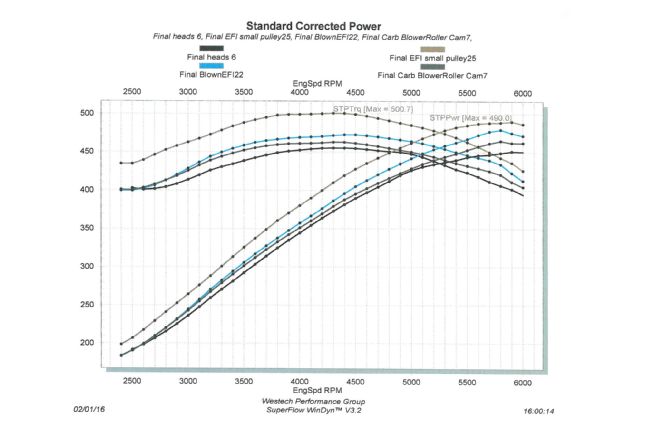
17. And we thought we made good power in the last article! Here you can see what adding more boost, more cam, and fuel injection did for our pint-sized powerhouse! What an exciting life this 190-horse crate engine has had.
FAST XFI Sportsman
FAST offers several great EFI systems, starting with the EZ EFI and EZ EFI 2.0. While these systems work excellent, neither is compatible with forced-induction applications. For that reason we opted for the XFI Sportsman system that bridges the gap between EZ EFI and the XFI 2.0 system. The Sportsman system uses the same 1,200-horsepower-capable throttle body injection system as the EZ systems and also has self-learning capability. The Sportsman XFI is also 100 percent user-tunable.